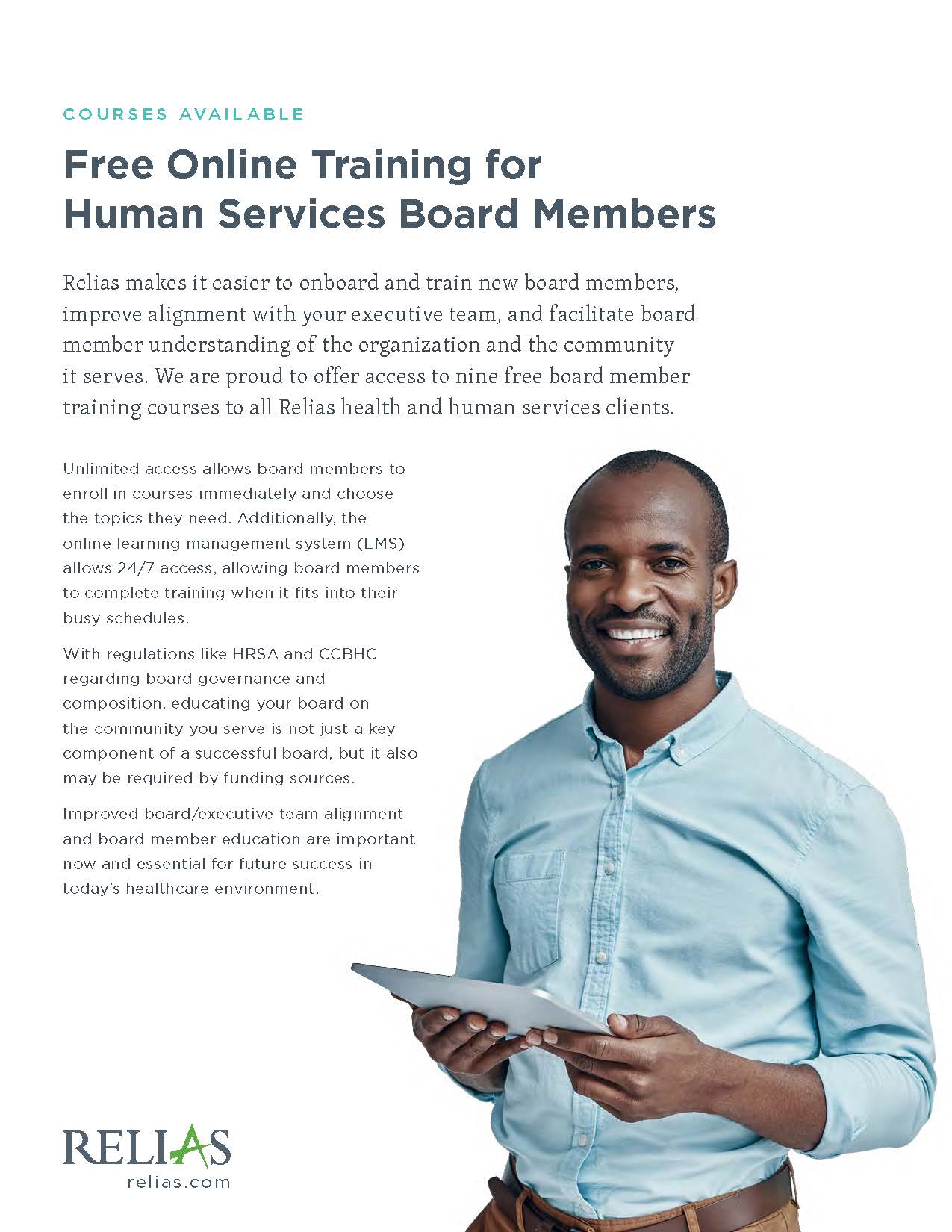As nonprofit human service organizations continue to manage the incredible challenges brought on by the pandemic, employee wellness becomes top of mind. The overall health of an organization is dependent on a well-functioning and proficient staff. However, the ability for an organization to have a healthy staff depends on leadership, and often, this leadership starts at the very top — its board of directors.
A health board can foster a healthy organization. A healthy organization leads to happier staff and better clinical outcomes for the population it serves. Organizations that are resilient in the face of incredible change include their board on any strategic initiatives, which often includes learning and development.
Organizational change requires buy-in from all levels. Therefore, it’s critical that your board of directors is receiving the same training and development as the staff providing services. A healthy board has adequate training that includes board governance, topics targeting the mission of the organization, and knowledge about the populations served. Board member training needs to be part of your overall organizational strategy.
Board member training includes board governance
One aspect of board member training is having members who are adequately trained on topics critical to board governance and the purpose of the organization. According to the 2017 National Index of Nonprofit Board Practices survey, one quarter of board chairs gave their board members a grade of “C” or below when it came to understanding their roles and responsibilities.
Board governance training that includes topics such as board responsibilities and activities, models of organizational sustainability, and how to support positive working relationships are crucial in bolstering your board members’ skills.
Understanding the population served
Individuals recruited to a board may feel passion for the organization’s mission but may not have the lived experience of the persons served by the organization. Or, they may not have a similar background to the clinicians and other employees providing services. This is why it’s also important to ensure your board not only learns topics around governance, but other topics like cultural competency, trauma-informed care, and HIPAA as well.
Having a good understanding of the populations served is also critical — whether you serve individuals with substance use disorder, severe and persistent mental illness, or developmental disabilities, it’s critical for board members to have good working knowledge of the challenges and protective factors facing persons served.
What tools can help board member training?
The tools your organization uses to manage and track employee learning and development can and should be utilized when training board members.
Many organizations use a learning management system (LMS) to help track training, whether for regulatory compliance or for the continuing education of clinicians. An LMS makes it simple and easy to assign training to members. It can also help disseminate other information like board manuals or policy documents.
Online training modules are also a worthwhile investment. When accessed via an LMS, online training makes it easy for board members to learn on their own time. Board meetings often have a full agenda, so having training available ad hoc online means you don’t have to waste time in meetings or at annual retreats performing necessary training.
Online training also increases access to continuous learning. Board training should occur as often as needed, not necessarily just annually. Investment in quality content and a well-functioning LMS means you can provide necessary training on pertinent topics to your board members at any time it is needed.
Board member training best practices
There are a few best practices that can enhance board members’ training:
- Board member training should be ongoing and cyclical. Regular training keeps members invested in staying active with the organization, fulfilling their roles, and engaged with issues facing the populations served.
- Organizations should have a plan for board orientation and a process for training new board members. This process should be customized according to the needs of the organization.
- Training should begin with understanding the board handbook, a copy of the organization’s strategic plan, and understanding Robert’s Rules of Order or other board management practices.
- When developing training, consider the members’ current existing strengths, weaknesses, skills, talents, and abilities. Determine what would be most beneficial for the members to successfully fulfill their board duties.

Free Online Training for Human Services Board Members
Relias makes it easier to onboard and train new board members, improve alignment with your executive team, and facilitate board member understanding of the organization and the community it serves. We are proud to offer access to free board member training courses for all Relias health and human services customers.
Download the Factsheet →





